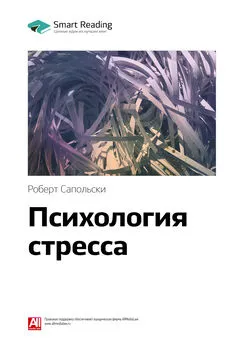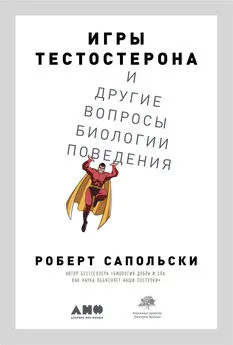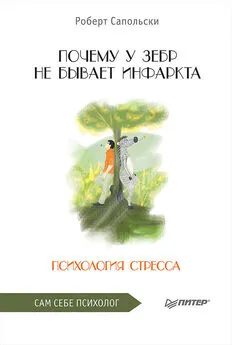Роберт Сапольски - Биология добра и зла. Как наука объясняет наши поступки
- Название:Биология добра и зла. Как наука объясняет наши поступки
- Автор:
- Жанр:
- Издательство:Альпина нон-фикшн
- Год:2019
- Город:Москва
- ISBN:978-5-0013-9051-0
- Рейтинг:
- Избранное:Добавить в избранное
-
Отзывы:
-
Ваша оценка:
Роберт Сапольски - Биология добра и зла. Как наука объясняет наши поступки краткое содержание
Биология добра и зла. Как наука объясняет наши поступки - читать онлайн бесплатно ознакомительный отрывок
Интервал:
Закладка:
158
К сноске: E. Hall et al., “A Rose by Any Other Name? The Consequences of Subtyping ‘African-Americans’ from ‘Blacks,’” JESP 56 (2015): 183.
159
К сноске: K. Jung et al., “Female Hurricanes Are Deadlier Than Male Hurricanes. PNAS 111 (2014): 8782.
160
A. Tversky and D. Kahneman, “Rationale Choice and the Framing of Decisions,” J Business 59 (1986): S251; также см.: J. Bargh et al., “Priming In-group Favoritism: The Impact of Normative Scripts in the Minimal Group Paradigm,” JESP 37 (2001): 316; C. Zogmaister et al., “The Impact of Loyalty and Equality on Implicit Ingroup Favoritism,” Group Processes & Intergroup Relations 11 (2008): 493.
161
J. Christensen and A. Gomila, “Moral Dilemmas in Cognitive Neuroscience of Moral Decision-Making: A Principled Review,” Nsci Biobehav Rev 36 (2012): 1249; L. Petrinovich and P. O’Neill, “Influence of Wording and Framing Effects on Moral Intuitions,” Ethology and Sociobiology 17 (1996): 145; R. O’Hara et al., “Wording Effects in Moral Judgments,” Judgment and Decision Making 5 (2010): 547; R. Zahn et al., “The Neural Basis of Human Social Values: Evidence from Functional MRI,” Cerebral Cortex 19 (2009): 276.
162
D. Butz et al., “Liberty and Justice for All? Implications of Exposure to the U.S. Flag for Intergroup Relations,” PSPB 33 (2007): 396; M. Levine et al., “Identity and Emergency Intervention: How Social Group Membership and Inclusiveness of Group Boundaries Shape Helping Behavior,” PSPB 31 (2005): 443; R. Enos, “Causal Effect of Intergroup Contact on Exclusionary Attitudes,” PNAS 111 (2014): 3699.
163
M. Shih et al., “Stereotype Susceptibility: Identity Salience and Shifts in Quantitative Performance,” Psych Sci 10 (1999): 80.
164
P. Fischer et al., “The Bystander-Effect: A Meta-analytic Review on Bystander Intervention in Dangerous and Non-dangerous Emergencies,” Psych Bull 137 (2011): 517.
165
B. Pawlowski et al., “Sex Differences in Everyday Risk-Taking Behavior in Humans,” Evolutionary Psych 6 (2008): 29; B. Knutson et al., “Nucleus Accumbens Activation Mediates the Influence of Reward Cues on Financial Risk Taking,” Neuroreport 26 (2008): 509; V. Griskevicius et al., “Blatant Benevolence and Conspicuous Consumption: When Romantic Motives Elicit Strategic Costly Signals,” JPSP 93 (2007): 85; L. Chang et al., “The Face That Launched a Thousand Ships: The Mating-Warring Association in Men,” PSPB 37 (2011): 976; S. Ainsworth and J. Maner, “Sex Begets Violence: Mating Motives, Social Dominance, and Physical Aggression in Men,” JPSP 103 (2012): 819; W. Iredale et al., “Showing Off in Humans: Male Generosity as a Mating Signal,” Evolutionary Psych 6 (2008): 386; M. Van Vugt and W. Iredale, “Men Behaving Nicely: Public Goods as Peacock Tails,” Brit J Psych 104 (2013): 3.
166
J. Q. Wilson and G. Kelling, “Broken Windows,” Atlantic Monthly , March 1982, p. 29.
167
K. Keizer et al., “The Spreading of Disorder,” Sci 322 (2008): 1681.
168
Несколько хороших примеров того, как лобная кора направляет и концентрирует обработку сенсорной информации: G. Gregoriou et al., “Lesions of Prefrontal Cortex Reduce Attentional Modulation of Neuronal Responses and Synchrony in V4,” Nat Nsci 17 (2014): 1003; S. Zhang et al., “Long-Range and Local Circuits for Top-Down Modulation of Visual Cortex Processing,” Sci 345 (2014): 660 и T. Zanto et al., “Causal Role of the Prefrontal Cortex in Top-Down Modulation of Visual Processing and Working Memory,” Nat Nsci 14 (2011): 656.
169
R. Adolphs et al., “A Mechanism for Impaired Fear Recognition After Amygdala Damage,” Nat 433 (2005): 68.
170
M. Dadds et al., “Reduced Eye Gaze Explains Fear Blindness in Childhood Psychopathic Traits,” J the Am Academy of Child and Adolescent Psychiatry 47 (2008): 4; M. Dadds et al., “Attention to the Eyes and Fear-Recognition Deficits in Child Psychopathy,” Brit J Psychiatry 189 (2006): 280.
171
Здесь введение в кросс-культурные исследования по этой теме: R. Nisbett et al., “Culture and Systems of Thought: Holistic Versus Analytic Cognition,” Psych Rev 108 (2001): 291; T. Hedden et al., “Cultural Influences on Neural Substrates of Attentional Control,” Psych Sci 19 (2008): 12; J. Chiao, “Cultural Neuroscience: A Once and Future Discipline,” Prog in Brain Res 178 (2009): 287 и H. Chua et al., “Cultural Variation in Eye Movements During Scene Perception,” PNAS 102 (2005): 12629.
172
Химическая кастрация обычно действенна в случаях обсессивных перверсий: F. Berlin, “‘Chemical Castration’ for Sex Offenders,” NEJM 336 (1997): 1030. Недостаточная эффективность в случае «враждебных» насильников: K. Peters, “Chemical Castration: An Alternative to Incarceration,” Duquesne University Law Rev 31 (1992): 307. Общие указания на то, что химическая кастрация не слишком эффективна: P. Fagan, “Pedophilia,” JAMA 288 (2002): 2458. Я благодарю Ариеля Ласки за помощь в исследовании по данной теме.
173
За примерами об отсутствии корреляции у приматов обращайтесь к работе: M. Arlet et al., “Social Factors Increase Fecal Testosterone Levels in Wild Male Gray-Cheeked Mangabeys ( Lophocebus albigena ),” Horm Behav 59 (2011): 605; J. Archer, “Testosterone and Human Aggression: An Evaluation of the Challenge Hypothesis,” Nsci Biobehav Rev 30 (2006): 319; приведенная цитата – со с. 320.
174
J. Oberlander and L. Henderson, “The Sturm und Drang of Anabolic Steroid Use: Angst, Anxiety, and Aggression,” TINS 35 (2012): 382; R. Agis-Balboa et al., “Enhanced Fear Responses in Mice Treated with Anabolic Androgenic Steroids,” Neuroreport 22 (2009); 617.
175
E. Hermans, et al., “Testosterone Administration Reduces Empathetic Behavior: A Facial Mimicry Study,” PNE 31 (2006): 859; J. Honk et al., “Testosterone Administration Impairs Cognitive Empathy in Women Depending on Second-to-Fourth Digit Ratio,” PNAS 108 (2011): 3448; P. Bos et al., “Testosterone Decreases Trust in Socially Naive Humans,” PNAS 107 (2010): 9991; P. Bos et al., “The Neural Mechanisms by Which Testosterone Acts on Interpersonal Trust,” Neuroimage 2 (2012): 730; P. Mehta and J. Beer, “Neural Mechanisms of the Testosterone-Aggression Relation: The Role of the Orbitofrontal Cortex,” J Cog Nsci 22 (2009): 2357.
176
L. Tsai and R. Sapolsky, “Rapid Stimulatory Effects of Testosterone upon Myotubule Metabolism and Hexose Transport, as Assessed by Silicon Microphysiometry,” Aggressive Behav 22 (1996): 357; C. Rutte et al., “What Sets the Odds of Winning and Losing?” TIEE 21 (2006) 16.
Уверенность в себе и выносливость: A. Boissy and M. Bouissou, “Effects of Androgen Treatment on Behavioral and Physiological Responses of Heifers to Fear-Eliciting Situations,” Horm Behav 28 (1994): 66; R. Andrew and L. Rogers, “Testosterone, Search Behaviour and Persistence,” Nat 237 (1972): 343; J. Archer, “Testosterone and Persistence in Mice,” Animal Behav 25 (1977): 479; M. Fuxjager et al., “Winning Territorial Disputes Selectively Enhances Androgen Sensitivity in Neural Pathways Related to Motivation and Social Aggression,” PNAS 107 (2010): 12393.
У спортсменов: M. Elias, “Serum Cortisol, Testosterone, and Testosterone-Binding Globulin Responses to Competitive Fighting in Human Males,” Aggressive Behav 7 (1981): 215; A. Booth et al., “Testosterone, and Winning and Losing in Human Competition,” Horm Behav 23 (1989): 556; J. Carré and S. Putnam, “Watching a Previous Victory Produces an Increase in Testosterone Among Elite Hockey Players,” PNE 35 (2010): 475; A. Mazur et al., “Testosterone and Chess Competition,” Soc Psych Quarterly 55 (1992): 70; J. Coates and J. Herbert, “Endogenous Steroids and Financial Risk Taking on a London Trading Floor,” PNAS 105 (2008): 616.
177
N. Wright et al., “Testosterone Disrupts Human Collaboration by Increasing Egocentric Choices,” Proc Royal Soc B (2012): 2275.
178
P. Mehta and J. Beer, “Neural Mechanisms of the Testosterone-Aggression Relation: The Role of Orbitofrontal Cortex,” J Cog Nsci 22 (2010): 2357; G. van Wingen et al., “Testosterone Reduces Amygdala – Orbitofrontal Cortex Coupling,” PNE 35 (2010): 105; P. Bos and E. Hermans et al., “The Neural Mechanisms by Which Testosterone Acts on Interpersonal Trust,” Neuroimage 2 (2012): 730.
179
Тестостерон снижает уровень страха и тревоги у грызунов: C. Eisenegger et al., “The Role of Testosterone in Social Interaction,” TICS 15 (2011): 263. Тестостерон ослабляет реакцию страха: V. Viau, “Functional Cross-Talk Between the Hypothalamic-Pituitary-Gonadal and -Adrenal Axes,” J Neuroendocrinology 14 (2002): 506. Тестостерон ослабляет реакцию вздрагивания у человека: J. van Honk et al., “Testosterone Reduces Unconscious Fear But Not Consciously Experienced Anxiety: Implications for the Disorders of Fear and Anxiety,” BP 58 (2005): 218; E. J. Hermans et al., “A Single Administration of Testosterone Reduces Fear-Potentiated Startle in Humans,” BP 59 (2006): 872.
180
Общие обзоры: R. Woods, “Reinforcing Aspects of Androgens,” Physiology & Behav 83 (2004): 279; A. DiMeo and R. Wood, “Circulating Androgens Enhance Sensitivity to Testosterone Self-Administration in Male Hamsters,” Pharmacology, Biochemistry & Behav 79 (2004): 383; M. Packard et al., “Rewarding Affective Properties of Intra – Nucleus Accumbens Injections of Testosterone,” Behav Nsci 111 (1997): 219.
181
A. N. Dimeo and R. I. Wood, “ICV Testosterone Induces Fos in Male Syrian Hamster Brain,” PNE 31 (2006): 237; M. Packard et al., “Rewarding Affective Properties of Intra – Nucleus Accumbens Injections of Testosterone,” Behav Nsci 111 (1997): 219; M. Packard et al., “Expression of Testosterone Conditioned Place Preference Is Blocked by Peripheral or Intra-accumbens Injection of Alpha-flupenthixol,” Horm Behav 34 (1998) 39; M. Fuxjager et al., “Winning Territorial Disputes Selectively Enhances Androgen Sensitivity in Neural Pathways Related to Motivation and Social Aggression,” PNAS 107 (2010): 12393; A. Lacreuse et al., “Testosterone May Increase Selective Attention to Threat in Young Male Macaques,” Horm Behav 58 (2010): 854.
Читать дальшеИнтервал:
Закладка:

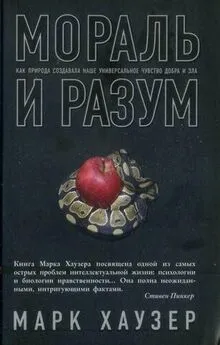
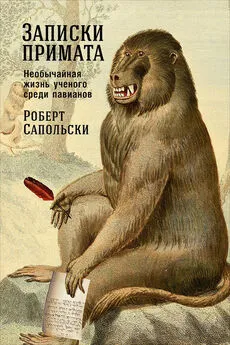


![Роберт Сапольски - Игры тестостерона и другие вопросы биологии поведения [litres]](/books/1074102/robert-sapolski-igry-testosterona-i-drugie-vopros.webp)


